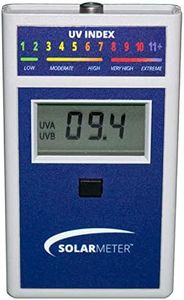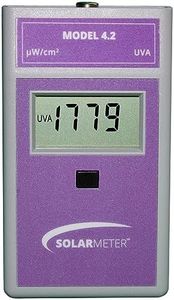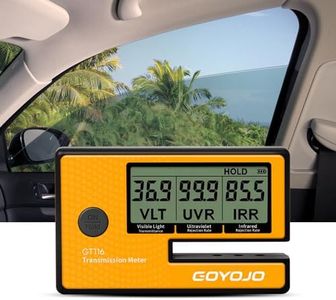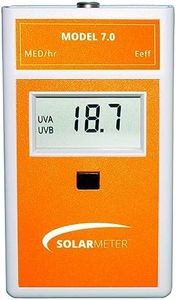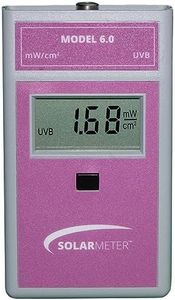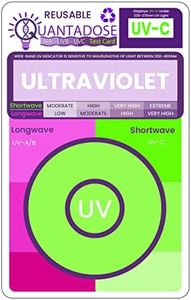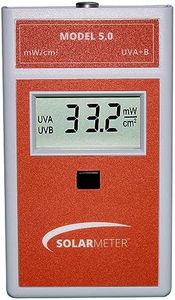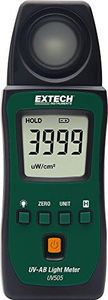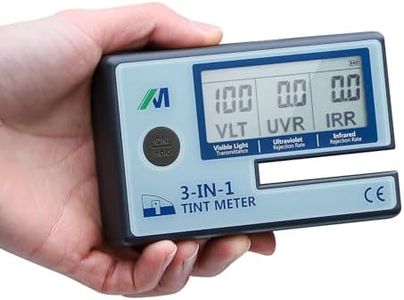We Use CookiesWe use cookies to enhance the security, performance,
functionality and for analytical and promotional activities. By continuing to browse this site you
are agreeing to our privacy policy
10 Best Uv Meters 2025 in the United States
How do we rank products for you?
Our technology thoroughly searches through the online shopping world, reviewing hundreds of sites. We then process and analyze this information, updating in real-time to bring you the latest top-rated products. This way, you always get the best and most current options available.

Buying Guide for the Best Uv Meters
Choosing the right UV meter can be a bit overwhelming, but understanding the key specifications can help you make an informed decision. UV meters are used to measure ultraviolet (UV) radiation, which is important in various applications such as monitoring UV exposure, ensuring the effectiveness of UV sterilization, and checking the performance of UV lamps. By focusing on the key specifications, you can find a UV meter that best fits your needs.Wavelength RangeThe wavelength range of a UV meter indicates the spectrum of UV light it can measure. UV light is divided into three main categories: UVA (320-400 nm), UVB (280-320 nm), and UVC (100-280 nm). This spec is important because different applications require measurement of different UV ranges. For example, UVA is often used in curing and tanning, UVB in medical treatments, and UVC in sterilization. To pick the right one, consider what type of UV light you need to measure. If you need to measure multiple types, look for a meter that covers a broader range.
Measurement RangeThe measurement range indicates the intensity of UV radiation that the meter can measure, usually expressed in microwatts per square centimeter (µW/cm²) or milliwatts per square centimeter (mW/cm²). This spec is important because it determines the sensitivity and maximum capacity of the meter. Low-range meters (up to 1,000 µW/cm²) are suitable for low-intensity applications like monitoring UV exposure, while high-range meters (up to 200 mW/cm²) are needed for high-intensity applications like UV curing. Choose a meter with a measurement range that matches the intensity of UV radiation in your specific application.
AccuracyAccuracy refers to how close the meter's readings are to the actual UV radiation levels. This spec is crucial for applications where precise measurements are necessary, such as in scientific research or quality control. Accuracy is usually expressed as a percentage of the reading. Higher accuracy (within ±5%) is important for critical applications, while lower accuracy (within ±10%) may be acceptable for general monitoring. Consider how critical accurate measurements are for your needs when choosing a UV meter.
Display and ReadoutThe display and readout of a UV meter show the measured UV radiation levels. This spec is important for ease of use and readability. Some meters have simple digital displays, while others offer more advanced features like backlighting, data logging, and graphical displays. If you need to take quick and easy readings, a basic digital display may suffice. For more detailed analysis and record-keeping, look for meters with advanced display features.
CalibrationCalibration ensures that the UV meter provides accurate readings over time. This spec is important because UV sensors can drift and lose accuracy. Some meters come with a certificate of calibration, while others may require periodic recalibration. If you need consistent and reliable measurements, choose a meter that either comes pre-calibrated or offers easy calibration options. Consider how often you will use the meter and whether you have access to calibration services.
PortabilityPortability refers to the ease with which you can carry and use the UV meter in different locations. This spec is important for fieldwork or applications where you need to measure UV radiation in various settings. Portable meters are typically lightweight and battery-operated, making them easy to transport. If you need to take measurements on the go, look for a compact and portable UV meter. For stationary use, portability may be less of a concern.
Most Popular Categories Right Now
